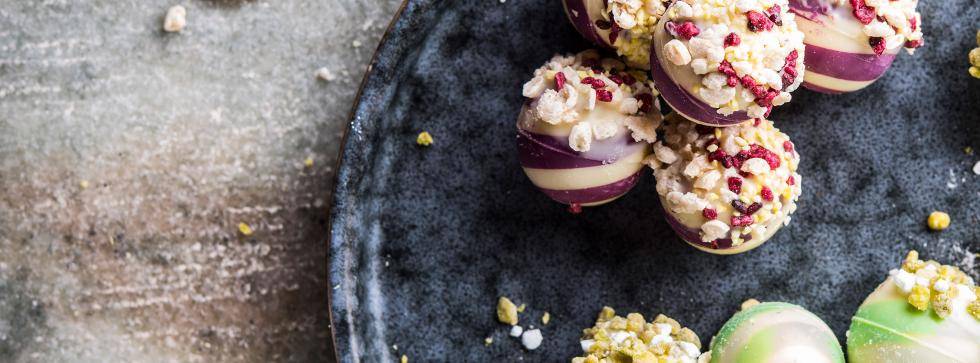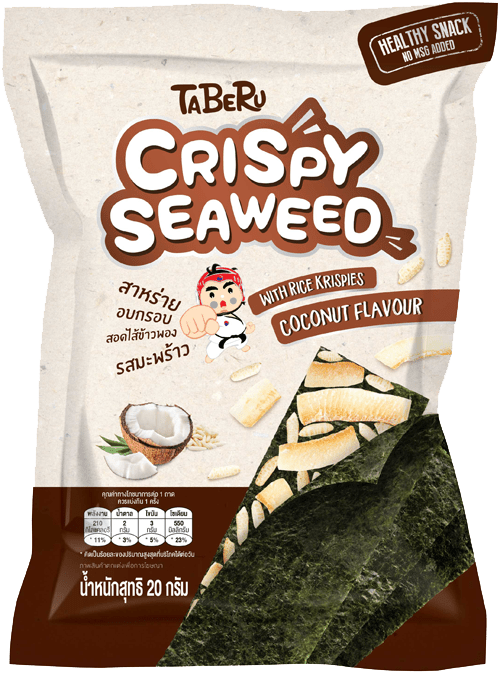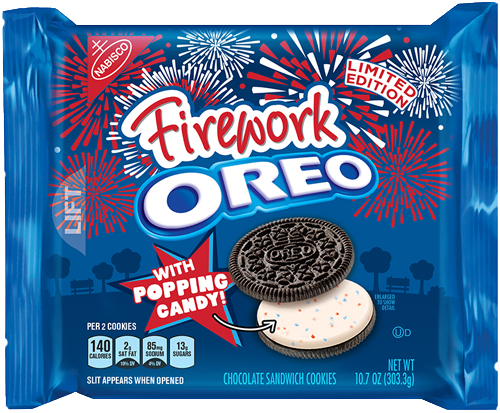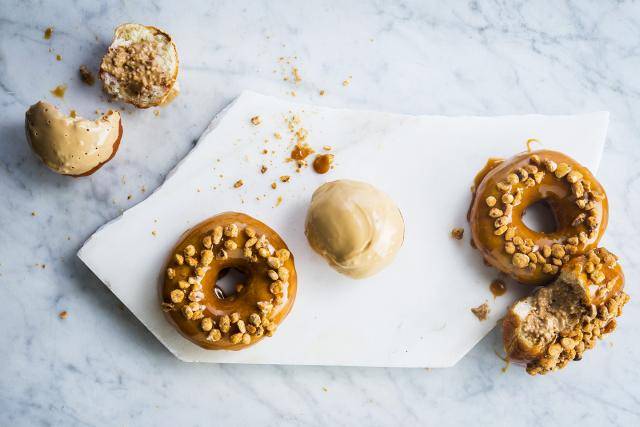Why inclusions make the difference

Why inclusions make the difference
Consumers crave for multi-sensorial experiences
A great product isn’t always just about taste. It can be a whole sensory experience including a tantalizing aroma, an appealing appearance or a wider range of unique textures that appeal to all senses. Consumers, and in particular Millennials and the Gen Y youngsters, want their palates to be stimulated, challenged, surprised. Texture (mouthfeel) is suggested today as the new taste to create unexpected indulging & pleasurable sensory experiences.
In 2018, the sound, feel and satisfaction that texture provides will become more important for consumers

Consumers’ texture preferences
Did you know that everyone has a specific eating style in which texture (mouthfeel) plays a critical role? Four types of eating styles – Crunchers, Smooshers, Chewers and Suckers – define how people consume and enjoy their food. In Western Europe, the majority are crunchers and chewers.
Crunchers:
Eat forcefully and loud.
Eat super quick.
Crunch until it’s gone.
Lovers of firm crispy.
Love chocolate crunchy cookies & chocolate covered peanuts
Chewers:
Enjoy multi-textured foods.
Like long, full chewing sensations.
Lovers of crumbly and chewy textures.
Love chocolate covered raisins & brownies
Smooshers:
Eat slowly.
Love soft, uniform textures.
Don’t enjoy chewing.
Love granola chocolate bars & chocolate truffles
Suckers:
Slow eaters.
Suck before chewing.
Like multi-layered products.
Enjoy the flavor.
Love hard chocolate pieces
Each consumer is different, they eat differently and will be satisfied by different types of textures. But if a texture claim is made, then that texture claim should deliver into their eating experience.
Source: Mouth Behaviour theory – Copyright 2016
The Understanding & Insight Group, LLC
Eating Styles: a complete guide to our
unexpressed love of food - Ingredion, 2017
How to bring texture alive?
Texture is a key driver of the eating and drinking experience and it affects the senses from first look through product consumption.
- In store - Which texture claims are on the packaging?
- Before eating - How does the product look outside of packaging?
- While eating - How does it feel in the mouth? How do you eat it?
- After swallowing - What is left in the mouth?
Today Europe has the largest share of global food and drink launches with descriptions of texture since January 2016, according to Mintel.
These detailed product descriptions could be inspiring some of the 37% of Spanish, 36% of Polish, 26% of French, and 22% of German and as well of Italian consumers who are open to trying food and drink with unusual textures. Although Europe may lead, Asia is a model for the potential of unexpected applications of texture in food and drinks.

Texture novelties
New product launches today are driven by unexpected flavor sensations and new texture combinations such as crispy with smooth, velvety and crunchy, soft and hard, chewy and wet. Tomorrow, the quest for unusual experiences provides product opportunities with unexpected texture fusions - such as ‘crinchy’, mixing crunchy and crispy, ‘softy’ by mixing soft and chewy.
These multisensory creations provide the iGeneration (teens and young adults) - as well as consumers of all ages - with tangible connections to the real world as well as moments worth sharing either in person or online.

Bring texture alive with inclusions
Adding inclusions to your products is a simple way to trigger consumer interest and impact flavor release and mouthfeel sensations, especially when people see unique creations that they’d love to try out. Barry Callebaut offers an extensive range of inclusions to bring that breath of fresh air in your product offerings. With the acquisition of D’Orsogna Dolciaria, we were able to bring even more excitement to this product category. With this range of innovative and top quality products we can inspire you to create exclusive combinations of textures, flavors and pleasure.


